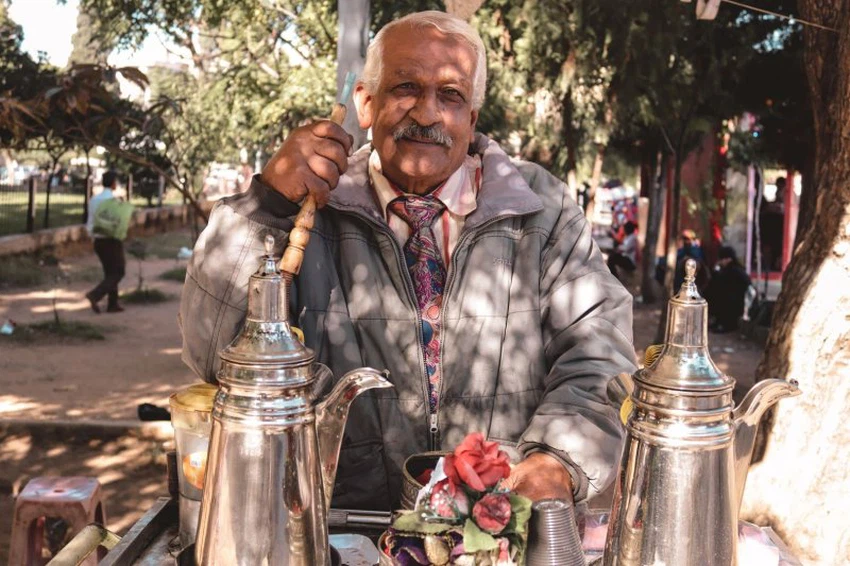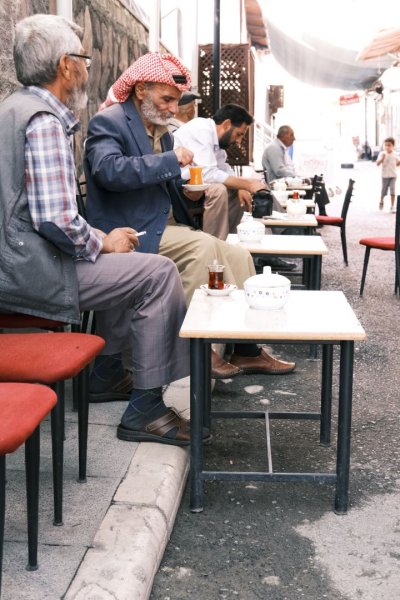Do you like drinking karak tea in the winter? Here are its most important benefits
Arabia Weather - The winter season witnesses an increase in people’s preference to enjoy a cup of Karak tea, which is very famous in the Arab and Gulf countries.
The preparation methods used in preparing Karak tea vary from one region to another. The tea leaves are often boiled and then milk is added with distinct flavors such as cardamom and saffron. Some other people add their own touches with ingredients such as cinnamon and ginger to improve the tea drinking experience and add additional flavour.
The fragrance of heritage in a cup of Karak... Karak tea’s journey around the world
On a rainy day, Ahmed, who works in a café in Jordan, rushes to meet the requests of his customers who have lined up in front of the café to get Karak tea, which is considered one of the common drinks in Jordan. On the other side of the globe, Shams Al-Din carries a tray full of cups containing this delicious drink. Morocco caters to the demands of its customers who enjoy the rhythm of Moroccan folk music.
From Morocco to Doha in Qatar, Abdul Rahman sees that his mornings in the café do not begin with many people lining up in their cars to get karak tea, which is considered a popular drink in the Gulf.
Where did this drink come from? How was it passed down through generations throughout history?

What is the origin of karak: The flavor journey from India to the Arab countries
Karak tea, this unique drink that blends the flavors of tea, milk and cardamom, has origins that extend to the far reaches of the East, and reached the Arab countries from India and East Asia via sea trade voyages that embodied cultural communication between different cultures.
On these journeys, the transportation of goods was not limited to incense and spices only, but rather they carried with them rich social and cultural customs, the effects of which remain in society until today. The name “Karak” was derived from the Urdu language, where the word expresses the concept of “heavy or concentrated.”
Karak has become a social phenomenon in the Arab countries, as it tells the story of cultural communication and exchange that gave this drink new dimensions. Today, it is a symbol of cultural life and customs in the Arab countries. It occupies a distinguished place on the menus of cafes and restaurants, where local residents and foreign visitors enjoy it on a daily basis. Both.

Benefits of karak tea
- Improve digestion
Cardamom plays an important role in improving the health of the digestive system, as it helps relieve bloating and reduce stomach cramps.
- Getting rid of bad breath
The antibacterial agents found in cardamom help get rid of bad breath.
- Reduce the feeling of nausea
Ginger contributes to reducing the feeling of nausea, and it also contains antioxidants that play a role in preventing diseases such as heart disease.

How to prepare karak tea
Experts in preparing Karak tea say that preparing it is not an easy matter, as its lovers consider it a complex task, as they only accept the usual flavor embodied in the mixture of coarse tea, sugar and cardamom, with a touch of saffron to give the distinctive color, and liquid concentrated milk is added to complete the flavour, and it is The tea is then poured into the cup from a distance to ensure a perfect balance between the tea and milk.
Some advise following a healthy method of preparing it, whereby leaving the tea to boil on low heat for approximately 15 minutes , avoiding adding sugar and using natural flavors to enhance the taste of karak.
Karak tea occupies a prominent position in the entire Gulf region, and although there are some slight differences in the ingredients from one country to another, it retains the name by which it is known in all countries of the region, with the exception of Yemen, where it is called “Adeni tea.”
Read also:
Why should we eat chestnuts on cold winter nights?
3 types of daily drinks are accused of “brain-stealing” disease!
Sources:
Arabia Weather App
Download the app to receive weather notifications and more..



